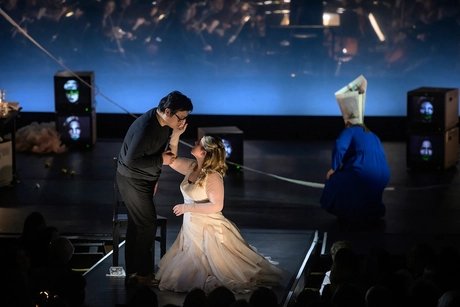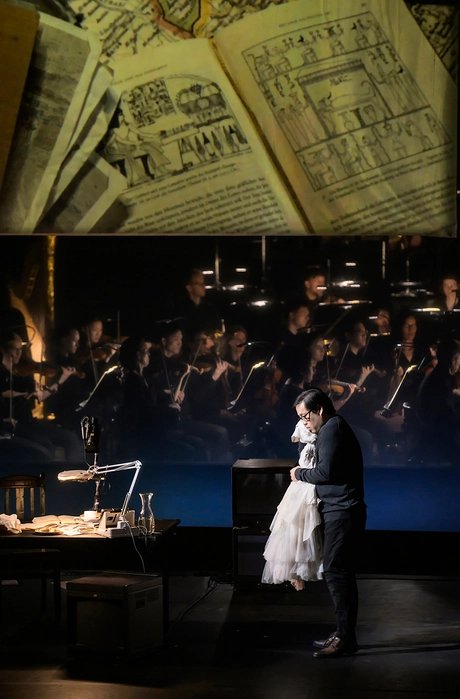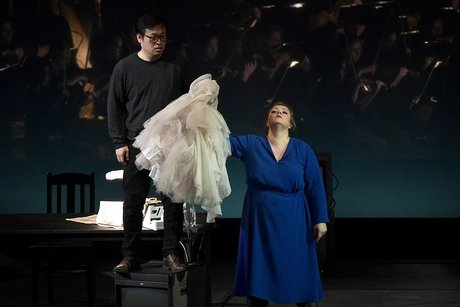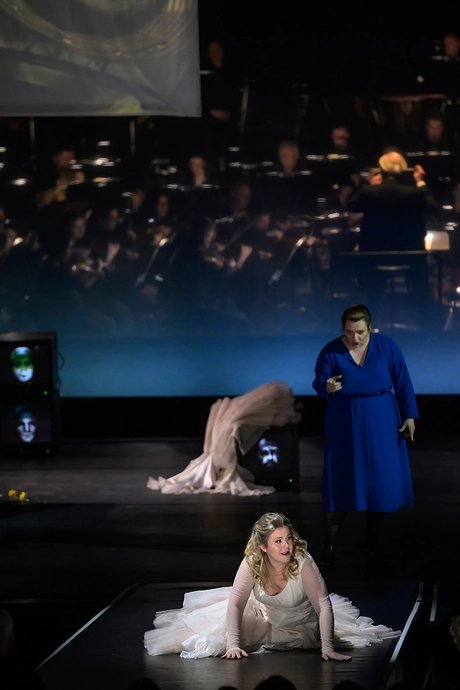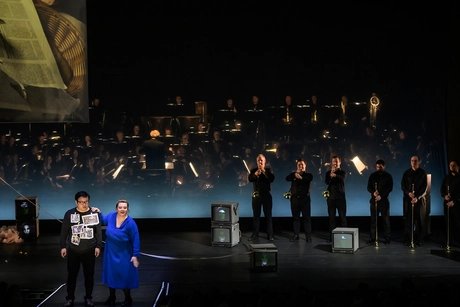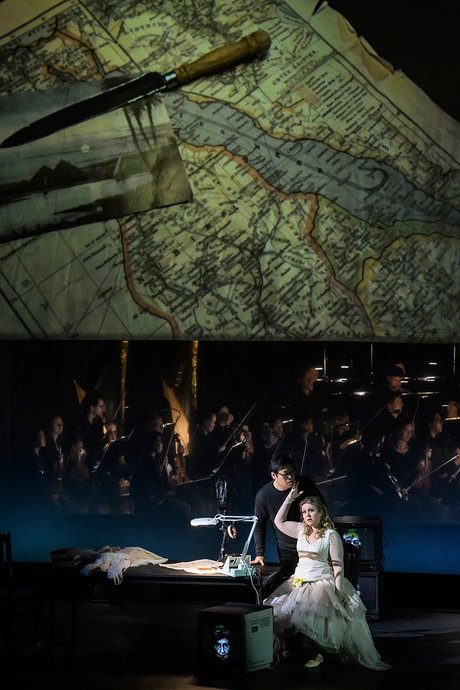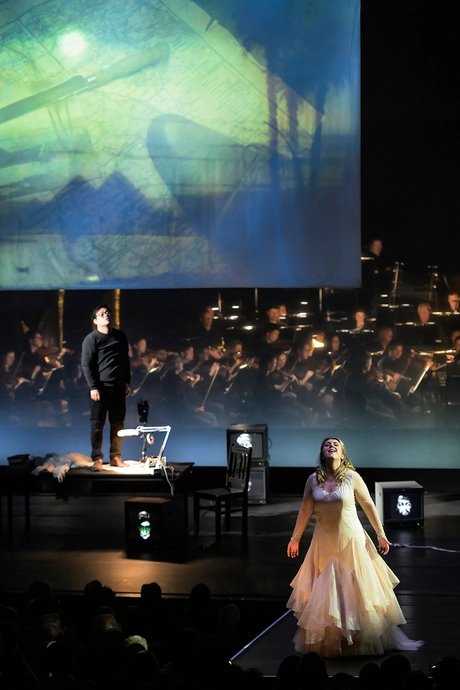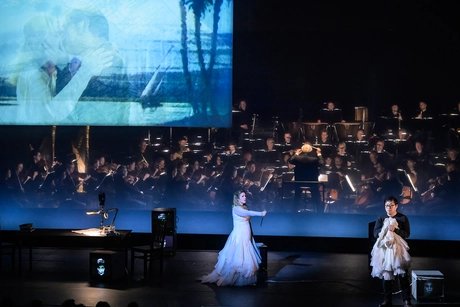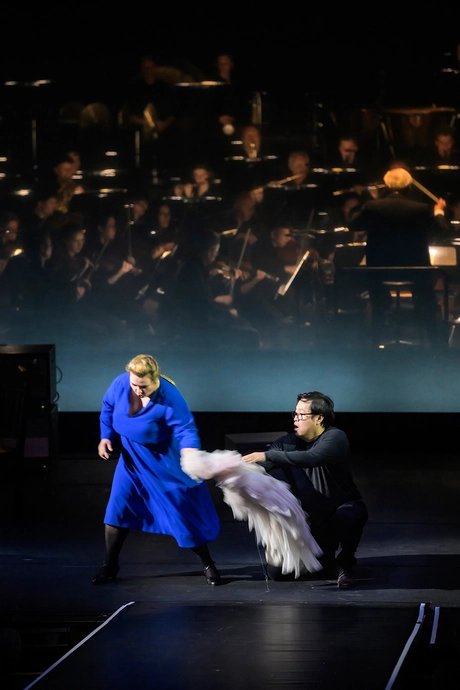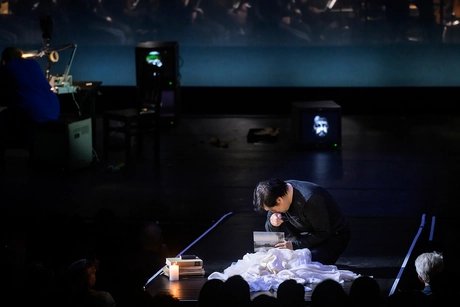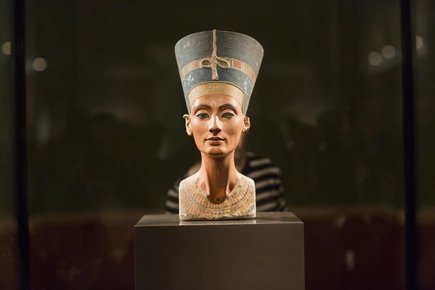
In Benedikt von Peter's production of Verdi's AIDA, exotic Egypt appears only as a distant fantasy on a postcard. Instead of a magnificent backdrop, the production focuses on Radames's inner turmoil – his everyday life filled with disillusionment and his escape into longing for an idealized, unattainable woman. The entire auditorium becomes a stage, transforming the operatic evening into an immersive experience.
- Conductor: Carlo Montanaro
- Director: Benedikt von Peter
- Featuring: Yulia Matochkina / Judit Kutasi, Gloria Jieun Choi / Christina Nilsson, Alfred Kim / SeokJong Baek, and others
About the Play
"Love, devotion, gentleness" – this is how Giuseppe Verdi describes his Aida: a character who, like many 19th-century operatic heroines, is not portrayed as an independent personality, but as a projection of male fantasies – with a predetermined end: death for love.
But Verdi presents this ideal image with a powerful counterpart: Amneris. Lively, passionate, and fierce – she represents a possible reality beyond romantic illusions.
Radames stands between these two women – between fantasy and reality. He longs for Aida, the distant, idealized lover, and portrays himself as a noble savior. But his desire to unite personal and political utopias is thwarted by reality: Aida is destined for tragedy, liberation remains unattainable – and she, too, demands violence.
Thus, at the center is a hero who loses himself – torn between longing and powerlessness. AIDA thus becomes one of Verdi's darkest operas, whose ending—the retreat into the grave—can also be interpreted as a farewell to hope: Aida's death simultaneously marks the end of a utopia.
About the Production
Benedikt von Peter reads AIDA as a "requiem for utopia"—as a piece permeated by the public eye and bringing the tension between the individual and the masses into the space.
His production utilizes the entire auditorium:
The orchestra sits on the main stage, the chorus is spread out among the audience, while the three main characters perform on the proscenium stage—caught between the power of the collective voice and their own loneliness.
Thus, Verdi's musical structure is brought to life—and the audience is literally immersed in the music.
- Duration: approx. 3 hours 15 minutes / One interval
- In Italian with German and English subtitles
Additional information
Opera lirica in four acts
Libretto by Antonio Ghislanzoni based on a draft by Auguste Mariette, developed by Camille Du Locle in collaboration with Giuseppe Verdi
World premiere 24th December 1871 in Cairo
Premiere at the Deutsche Oper Berlin, 22nd November 2015
Pre-performance lecture (in German): 45 minutes prior to each performance
Libretto by Antonio Ghislanzoni based on a draft by Auguste Mariette, developed by Camille Du Locle in collaboration with Giuseppe Verdi
World premiere 24th December 1871 in Cairo
Premiere at the Deutsche Oper Berlin, 22nd November 2015
Pre-performance lecture (in German): 45 minutes prior to each performance
Participating artists
Carlo Montanaro (Musikalische Leitung)
Benedikt von Peter (Inszenierung)
Katrin Wittig (Bühne)
Lene Schwind (Kostüme)
Bert Zander (Video)
Jeremy Bines (Chöre)
Patrick Guetti (Der König)
Yulia Matochkina (Amneris)
Gloria Jieun Choi (Aida)
Alfred Kim (Radames)
Volodymyr Morozov (Ramfis)
Michael Bachtadze (Amonasro)
Thomas Cilluffo (Ein Bote)
Alexandra Oomens (Eine Priesterin)
Chor der Deutschen Oper Berlin (Chor)
Orchester der Deutschen Oper Berlin (Orchester)
Dates
March 2026
| Mo | Tu | We | Th | Fr | Sa | Su |
|---|---|---|---|---|---|---|
1
| ||||||
2
|
3
|
4
|
5
|
6
|
7
|
8
|
9
|
10
|
11
|
12
|
13
|
14
|
15
|
16
|
17
|
18
|
19
|
20
|
21
|
22
|
23
|
24
|
25
|
26
|
27
|
28
|
29
|
30
|
31
|
